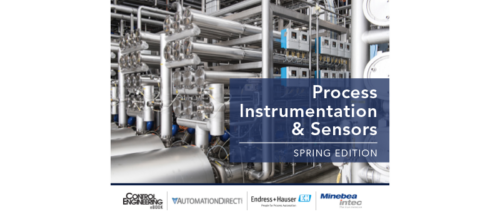Thermal dispersion sensor performs multiple functions
FlexSwitch from FCI can function as a level sensor, flow switch, and temperature sensor, with capability to differentiate media in separation tanks.
There are some sensing technologies that are capable of providing data on more than one type of process variable, although not always at the same time.
|
Flow switches provide a lower-cost alternative to flowmeters where high resolution is not required.
|
The FlexSwitch FLT93S from FCI uses thermal dispersion technology in a way that can provide several types of information because different fluids have different characteristics for carrying off heat. If you deal with multiple fluids, separation tanks, or other mixed density situations, this can come in very handy.
The FLT93S switch is an insertion-style instrument that can perform monitoring, controlling, and alarming of flow rates or levels of critical fluids such as foams, emulsion layers, liquids, and slurries. It can be configured to function as a level switch with temperature, or as a flow switch with temperature. Dual 6A relay outputs are standard and are assignable to flow, level or temperature.
FCI says that unlike density displacers, which are often used for level and interface control, the FLT93S relies on the specific heat transfer properties of the media to identify the interface of different products. Using its thermal dispersion sensing capability, the device monitors the interface of products with similar densities for reliable control in separation tanks and other vessels. Under most conditions it can identify the interface between any type of media including foam, emulsion layers, liquids, and slurries. Its dual switch point option allows one instrument to control two different product interfaces. Two or more switches are used to control product discharge and intake at specified points.
The FLT Switch operates over a wide setpoint range in water from 0.01 to 0.5 fps (0.003 to 0.15 mps). Level/interface accuracy is
The FLT features built-in temperature compensation to ensure repeatable and reliable operation, even in extreme environments such as those found in high temperature chemical refining and other process industries. The company says this automatic compensation adjusts the instrument for changes in operating environment temperatures to ensure the trip points will remain accurate and prevent false alarms or alarm failures.
A wide selection of standard and custom process connections can be provided. The electronic control circuit can be integrally-mounted with the sensing element, or it can be located in a remote location. The standard enclosure is made from a coated aluminum alloy. It is suitable for use in ATEX locations and is rated for NEMA Type 4X (IP66) environments. Stainless steel or fiberglass enclosures also are available.
-Edited by Peter Welander, process industries editor, PWelander@cfemedia.com,
Control Engineering Process Instrumentation & Sensors Monthly
Register here to select your choice of free eNewsletters .
Do you have experience and expertise with the topics mentioned in this content? You should consider contributing to our CFE Media editorial team and getting the recognition you and your company deserve. Click here to start this process.


